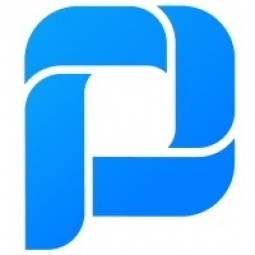Customer Company Size
Large Corporate
Region
- Africa
- Europe
Country
- Nigeria
- United Kingdom
- Ghana
- Kenya
- Tanzania
Product
- ProcessMaker workflow platform
Tech Stack
- Swift Financial Messaging Service
Implementation Scale
- Enterprise-wide Deployment
Impact Metrics
- Productivity Improvements
- Customer Satisfaction
Technology Category
- Application Infrastructure & Middleware - Data Exchange & Integration
Applicable Industries
- Finance & Insurance
Applicable Functions
- Business Operation
Use Cases
- Process Control & Optimization
Services
- System Integration
About The Customer
Guaranty Trust Bank plc is an international bank with business outlays spanning Anglophone and Francophone West Africa, East Africa and Europe. The Bank presently has an asset base of over N3.287 trillion and employs over 10,000 professionals in Nigeria, Cote D’Ivoire, Gambia, Ghana, Liberia, Kenya, Rwanda, Uganda, Sierra Leone, Tanzania, and the United Kingdom. Established in 1990, the Bank’s consistent delivery of innovative financial solutions and exceptional customer experiences has enabled it to record year on year growth in clientele base and key financial indices since inception. Recognizing a need to meet growing customer demands, GTBank adopted ProcessMaker as an enterprise solution. The bank is prized for its dedication to their “Orange Rules,” or eight principles of excellence that drive forward the bank’s brand and customer experience strategy. As an institution that prioritizes innovation, professionalism, and results, GTBank recognized its need to adopt new technology that would better fulfill its mission.
The Challenge
Before the implementation of ProcessMaker, GTBank’s internal business processes operated on an outdated management suite. The previous vendor’s product architecture and point solutions weren’t delivering the level of customization nor scalability for customers that the bank needed. The rising cost of the previous system became harder to justify. GTBank needed a central processing department at corporate to handle tasks like demographic changes and maintenance. Originally, this was happening at individual branches. Departmental silos and communication lags became a negative effect that contributed to the inefficiencies in cross-collaboration. GTBank also wanted to use the system for foreign exchange transactions—or exchanges involving money moving in and out of the country. Specifically, it needed to integrate ProcessMaker with the Swift Financial Messaging Service. This service generated Telex messages to notify banks when money transfers have been completed. Those requests would then be received and approved in the ProcessMaker system before initiating the transfer.
The Solution
GTBank required a robust solution that was going to be able to streamline all of its branches and processes on one platform. The amount of complexity, customization, and power the possible solution required was enormous. Due to the ProcessMaker platform being intuitive, simple to use among nontechnical personnel, and comprehensive, GTBank was able to use ProcessMaker for all operational needs. Today, any business unit not involved in central processing or foreign transfers uses ProcessMaker for process automation. All operations are able to be automated, transferred, assigned, and completed on the ProcessMaker platform. By handling cases faster at greater volume, the bank remains consistent in delivering its promise to utmost excellence in banking solutions. Once GTBank started using ProcessMaker, the platform quickly became the most used application at the bank. The financial institution has 7,500 users working 20,000 cases through the system, completing over 4 million cases in six years—that’s more than 150,000 per month. ProcessMaker has redefined how GTBank operates, giving it the tools it needs to better serve its customers and expand its business.
Operational Impact
Quantitative Benefit

Case Study missing?
Start adding your own!
Register with your work email and create a new case study profile for your business.
Related Case Studies.

Case Study
Real-time In-vehicle Monitoring
The telematic solution provides this vital premium-adjusting information. The solution also helps detect and deter vehicle or trailer theft – as soon as a theft occurs, monitoring personnel can alert the appropriate authorities, providing an exact location.“With more and more insurance companies and major fleet operators interested in monitoring driver behaviour on the grounds of road safety, efficient logistics and costs, the market for this type of device and associated e-business services is growing rapidly within Italy and the rest of Europe,” says Franco.“The insurance companies are especially interested in the pay-per-use and pay-as-you-drive applications while other organisations employ the technology for road user charging.”“One million vehicles in Italy currently carry such devices and forecasts indicate that the European market will increase tenfold by 2014.However, for our technology to work effectively, we needed a highly reliable wireless data network to carry the information between the vehicles and monitoring stations.”

Case Study
Safety First with Folksam
The competitiveness of the car insurance market is driving UBI growth as a means for insurance companies to differentiate their customer propositions as well as improving operational efficiency. An insurance model - usage-based insurance ("UBI") - offers possibilities for insurers to do more efficient market segmentation and accurate risk assessment and pricing. Insurers require an IoT solution for the purpose of data collection and performance analysis

Case Study
Smooth Transition to Energy Savings
The building was equipped with four end-of-life Trane water cooled chillers, located in the basement. Johnson Controls installed four York water cooled centrifugal chillers with unit mounted variable speed drives and a total installed cooling capacity of 6,8 MW. Each chiller has a capacity of 1,6 MW (variable to 1.9MW depending upon condenser water temperatures). Johnson Controls needed to design the equipment in such way that it would fit the dimensional constraints of the existing plant area and plant access route but also the specific performance requirements of the client. Morgan Stanley required the chiller plant to match the building load profile, turn down to match the low load requirement when needed and provide an improvement in the Energy Efficiency Ratio across the entire operating range. Other requirements were a reduction in the chiller noise level to improve the working environment in the plant room and a wide operating envelope coupled with intelligent controls to allow possible variation in both flow rate and temperature. The latter was needed to leverage increased capacity from a reduced number of machines during the different installation phases and allow future enhancement to a variable primary flow system.

Case Study
Automated Pallet Labeling Solution for SPR Packaging
SPR Packaging, an American supplier of packaging solutions, was in search of an automated pallet labeling solution that could meet their immediate and future needs. They aimed to equip their lines with automatic printer applicators, but also required a solution that could interface with their accounting software. The challenge was to find a system that could read a 2D code on pallets at the stretch wrapper, track the pallet, and flag any pallets with unread barcodes for inspection. The pallets could be single or double stacked, and the system needed to be able to differentiate between the two. SPR Packaging sought a system integrator with extensive experience in advanced printing and tracking solutions to provide a complete traceability system.

Case Study
Transforming insurance pricing while improving driver safety
The Internet of Things (IoT) is revolutionizing the car insurance industry on a scale not seen since the introduction of the car itself. For decades, premiums have been calculated using proxy-based risk assessment models and historical data. Today, a growing number of innovative companies such as Quebec-based Industrielle Alliance are moving to usage-based insurance (UBI) models, driven by the advancement of telematics technologies and smart tracking devices.
Case Study
Enhancing Security and Compliance in Remitly's Global Money Transfer Service with Fastly
Remitly, an online remittance service, was faced with the challenge of securing its proprietary global transfer network. The company needed a security solution that could meet PCI requirements and protect customers' sensitive transactions through its mobile application. The solution had to be capable of defending against new and emerging attack types without impacting performance. Remitly also had to deal with irregular traffic patterns, such as a sudden spike in account transfers from a small network segment on the Pacific coastline of South America. The company needed to determine in real time whether such traffic indicated an attack or valid requests. A traditional web application firewall (WAF) would not be able to distinguish this traffic, potentially leading to customer frustration if the IP was blacklisted.







